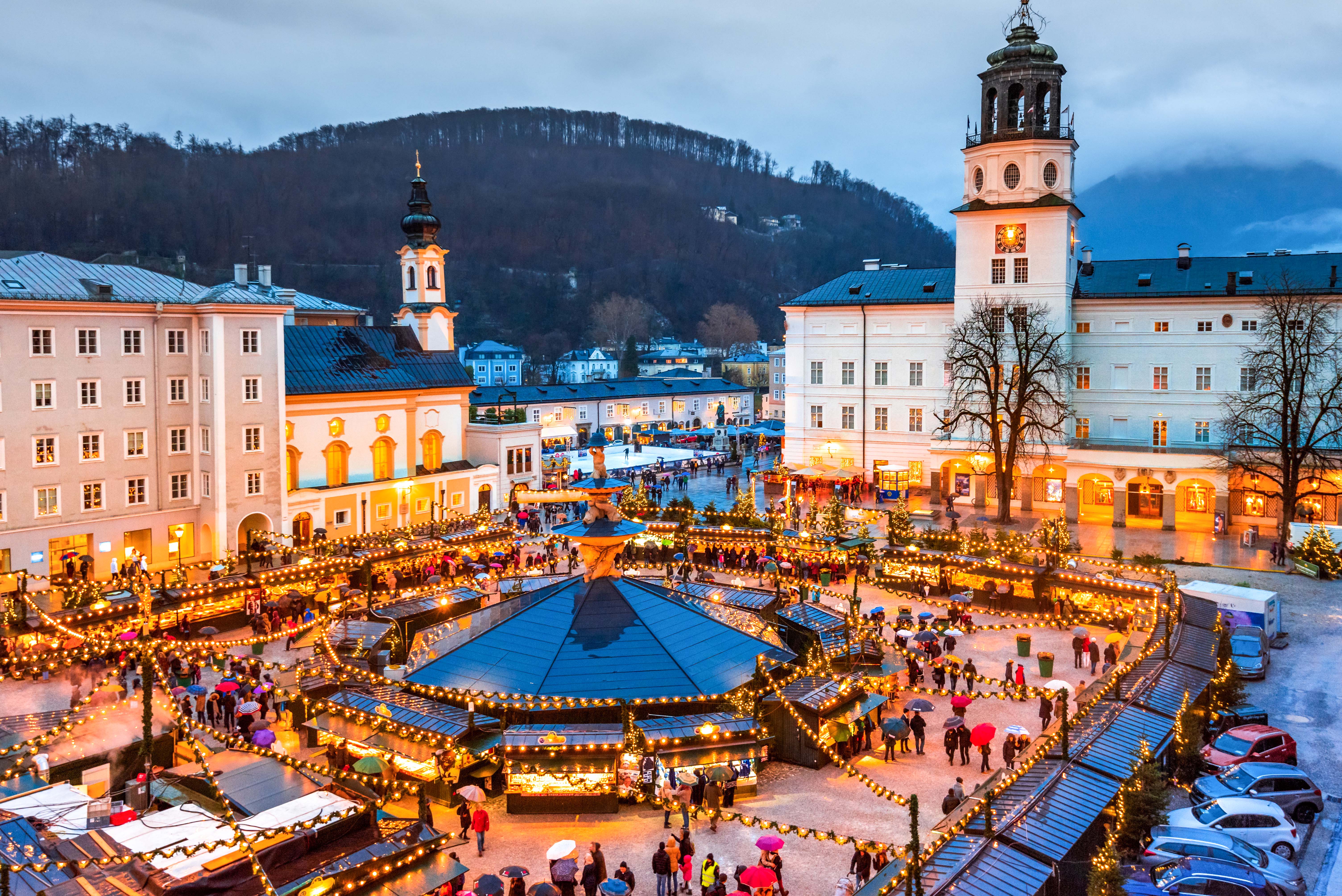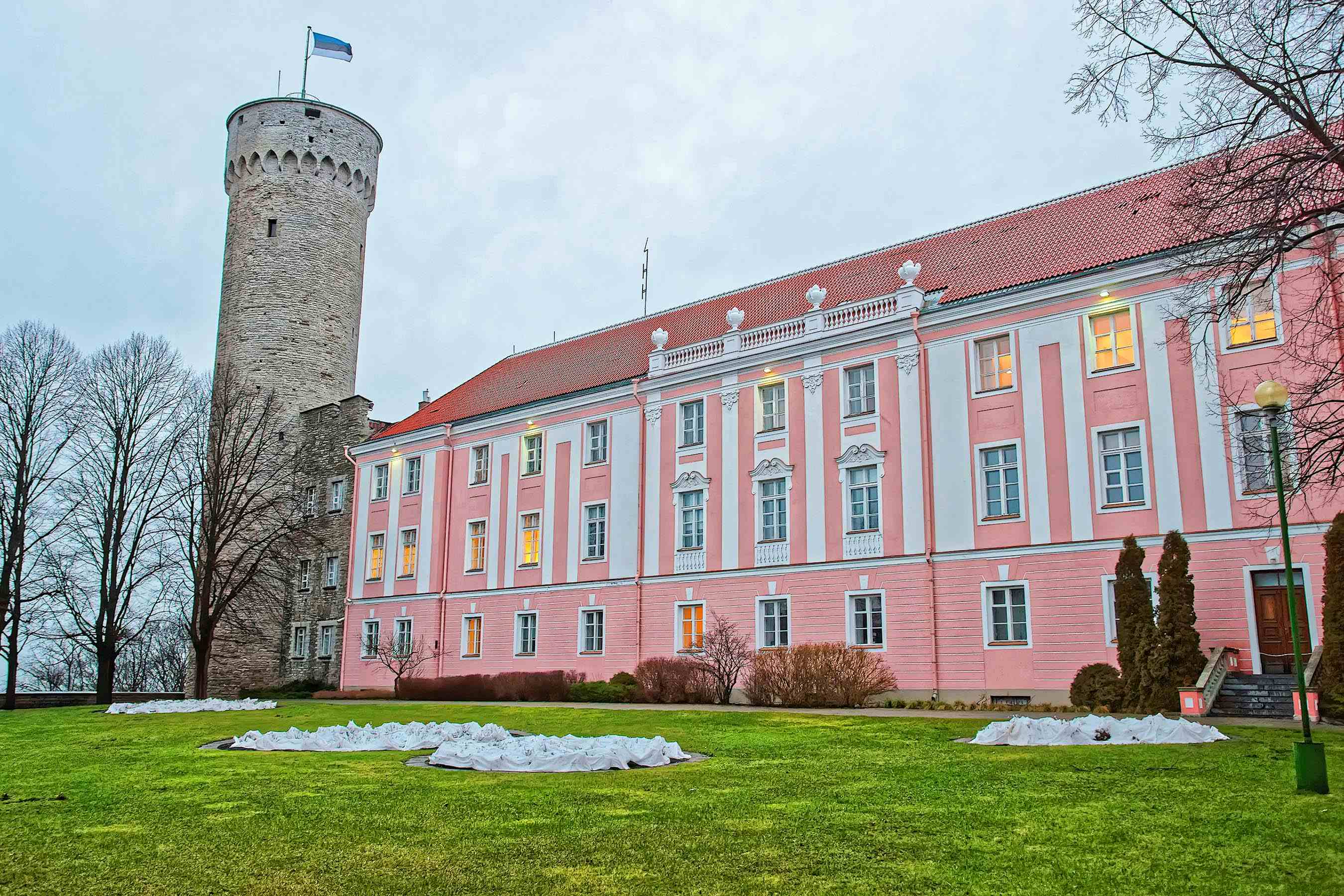The winter season transforms Europe into a magical winter wonderland. The biting cold of the Nordic countries might be a challenge, yet their breathtaking Northern Lights make up for it. Christmas markets in Germany, Austria and France are must-visit; they are lit beautifully and offer a variety of traditional food and crafts. Snow activities, especially in the Alpine regions of Switzerland and Italy, are popular attractions, adding a thrilling edge to the winter fairy tale. Be sure to enjoy some unique winter festivals too! Read on to know what it’s like visiting Europe during the winter season.
Quick jumplinks
Why visit Europe in winter?

1. The off-season charm of Europe
There's lesser crowds at famous tourist spots, allowing travelers to explore at their leisure. Cities are adorned with sparkling lights and holiday decoration. Although it's biting cold, some countries like Spain are relatively warmer and you will be able to enjoy the winter sun. Moreover airlines often offer off-season deals, making it economical for budget travelers in winter. Lower prices also extend to accommodations, with many hotels and guesthouses offering discounts during this period.
2. Winter is a time of celebration in Europe
When it comes to events, festivals, and attractions to see and experience in Europe during winter, there is no dearth of options. From London’s winter wonderland to Hogmanay in Edinburgh, carnivals across countries like Spain and Germany, and ice festivals like snowbombing in the ski town of Mayrhofen, Austria, you will be spoilt for choice. Visit the largest fire festival in Scotland’s Lerwick, Up Helly Aa, an exhilarating experience for those who love the Vikings!
3. It's romantic, too!
Picturesque snow-covered landscapes, the warm glow of street lamps, the cosy ambiance in cafes and restaurants make for a perfect setting for a romantic getaway. Take an evening stroll in romantic cities like Cologne, Paris, and Valencia. The weather, especially in the afternoon, allows travelers to make the most of their time while the sun is up. You can rent bicycles to ride by famous landmarks without worrying about sweating buckets.
4. Christmas markets in Europe in winter
Who can escape the magic and scintillating beauty of Europe’s famous Christmas markets? From quaint villages in Germany selling gluhwein aka mulled wine and kartoffelpuffer to London’s string fries laden with dollops of cheese, Christmas markets are whimsical events that are not to be missed.
Things to do in Europe in winter
Eiffel Tower in Paris

Although visiting the most-visited monument in Paris is a given, experiencing the Eiffel Tower in the winter has a magic of its own. Watch the city of love blanketed under snow from your spot in the observation deck. The tower is located on the Champs de Mars and is easily accessible by public transport. Tickets for the tower can be bought online as there are multiple entrances and ticket types including stairs, elevators, and the top floor. Get a Skip the Line pass or Eiffel Tower at night for a complete experience.
Cologne Carnival in Germany

This is one of the biggest street festivals in Europe, taking place in Cologne, Germany. The celebrations kick off in winter, usually around November 11 at 11:11 am and goes on until Ash Wednesday. This event is a must-attend as it features parades, balls, and lively street performances. Participants dress in elaborate costumes, and the atmosphere is filled with laughter and camaraderie.
‘The Crazy Days’ refer to the street-festivals where you will see hordes of locals dressed up in lively finery and eccentric costumes taking to the streets with drinks, food, and friends. You can get to Cologne easily by flight, train, or bus from anywhere in Germany. It has a well-managed bus and tram system in place to get around.
Visit the historic Alhambra Palace in Spain

A palace so exclusive that entrance tickets sell out months in advance, Alhambra Palace in Granada, Spain is well worth a visit. Built over ancient Roman ruins, it is significant for its architecture and served as a fortress before being a royal residence. The best way to experience the rich history of Alhambra is to opt for a guided tour with a local guide. The palace only permits 6000 visitors a day and tickets should be bought months before your planned visit. You can easily get to the Alhambra on foot via Cuesta del Rey Chico, by bus on route C30 and C32, among others. You are not permitted to take private cars to the palace.
The Salzburg Christmas Market

Visit this traditional Austrian market, considered one of the best in Europe. Here, you can browse through various stalls selling homemade crafts, Christmas decorations, and delicious local foods. The market is set against the backdrop of the Hohensalzburg Fortress and the historic city centre, making the experience even more magical.
Northern Lights

A phenomenon that shares a global and unified love from the masses and is easily on everyone’s bucket list, the Northern Lights or Aurora Borealis are best observed during the winter months when astronomy does its finest work yet. Across Northern Europe in countries like Finland, Iceland and Norway, you can go on a quest to catch the waves of light that overtake the winter night sky with hues that range from green, blue, pink, and purple. Book a Northern Lights tour now to enjoy this stunning spectacle!
Hogmanay, Edinburgh

Hogmanay, the Scottish word for the last day of the year, signifies the New Year’s Eve celebrations in Edinburgh, Scotland. It wraps up the holiday season with a bang, showcasing a grand firework display over Edinburgh Castle. Experience a torchlight procession, street party and the traditional singing of 'Auld Lang Syne'.
Pompeii, Italy

The ancient city of Pompeii, now a UNESCO World Heritage Site, was buried due to an eruption of Mount Vesuvius in 79 AD. Many ruins have been excavated and preserved by archaeologists that speak to the pain of those who must have suffered the lava explosion. It is recommended that the off-season, i.e. November to March may just be the best time to visit since there are fewer crowds of tourists and a pleasant weather.
Toompea Castle, Estonia

Image Courtesy:Abrget47j(Wikimedia Commons)
If you want to visit a country that remains relatively unexplored and has beautiful weather during the wintertime, Estonia is your best bet. Tallinn is a wonderful city with its medieval fortresses, cobbled streets so strikingly European, and iconic red-shingled rooftops. Toompea Castle, which was once a fortress and now houses the Parliament is a beautiful monument atop a limestone cliff. You can take a free walking tour each Monday and alternatively, you need to book tickets in advance if you want to visit the castle in its entirety. When you reach the high tower, Long Herman, you will be greeted by a spectacular view of the city. You can even observe Parliamentary proceedings from the public viewing galleries.
Snowbombing in Austria

A ski and snow festival that has been running for more than 20 years will be held this year from 8 - 13 April in Mayrhofen ski town, Austria. Snowbombing is a much-awaited winter festival with so much to offer. The raucous parties are held in various venues around the resorts. The show sees a glorious lineup of international artists, ski events, igloo raves, and forest parties. There are hot springs and spas to escape the winter chill for a while or you can enjoy sledding and snowboarding on the snowy slopes.
If you are traveling with your friends, this would be one heck of an experience with events like Ride & Seek, Water Splash, and Paragliding over the valley. You can take an exclusive Snowbombing transfer to Mayrhofen from any of the major airports like Munich, Salzburg, or Innsbruck.
Hungarian Parliament, Budapest

The majestic Hungarian Parliament is a striking modern-day example of neo-gothic architecture that was built and designed in the 19th-century. The Parliament is located in Kossuth Square named after Lajos Kossuth. It stands along the river Danube in Pest and offers some spectacular feats of architectural brilliance.
A city tour of Budapest is incomplete without a visit to the Parliament to see the Crown Jewels. Budapest is a beautiful city that truly comes alive during winter and you can make the most of your visit with a trip to the largest ice rink in Europe and Christmas markets brimming with spiced cider and roasted chestnuts.
Getting around Europe in Winter

Traveling around Europe can be daunting for first-timers, especially those who wish to visit more than one country. However, provisions are in place that will help you navigate this network of nations. A lot of planning depends on the number of days you are willing to spend on travel and transport alone. For instance, buses such as FlixBus will take you a day to reach Rome when RyanAir, a budget airline would get you to the city in two hours. The interplay of cost and time is the best determinant to plan your tour of Europe.
By Bus: There are major bus service providers such as FlixBus and Busabout that provide budget-friendly transportation to countries across Europe. For those who prefer bus travel to trains, FlixBus is your best option as the buses have wifi, provide a scenic route and don’t burn a hole in your pocket.
By Train: Another great way to travel around Europe is by getting your own Eurail Pass, a one-stop ticket that helps you on trains and ferries in different countries. The Interrail Pass, similar to the Eurail pass, offers unlimited train travel across 33 countries in Europe. The pass is available to European citizens and residents, making travel within Europe extremely convenient.
The TGV Lyria is a fast train that connects Switzerland and France, another time-saving trip.
By Air: Air travel is another great way to save on time and if you book in advance, you can get tickets as cheap as train tickets. However, make note that you may only be able to carry limited luggage as the baggage allowance is strict on flights like RyanAir and EasyJet.
Traveling Essentials
When you are traveling to Europe in winter, each destination offers unique temperatures, rainfall, and if you're wishing hard enough, endless snow. Ensure that you are carrying your warmest down jackets, hats, and gloves to protect your ears and fingers. If you are traveling to a country that will have snow, then snow boots are a must. Layering is key for winter as the afternoons tend to get warmer.
Season-special food
Winter means fresh berries and Europe is the best place for them. Elderberries, gooseberries, mulberries and so many more! Germany and Belgium, among other countries, serve delicious fries in their Christmas markets loaded with cheese and special sauces. From Swiss rosti to borscht, mulled wine and spiced cider, winter food is plenty, wholesome, and worth a taste.
Insider tips for your visit to Europe in winter
- Book your flight tickets and hotels in advance for security reasons and to save on budget deals.
- Check for restaurants and attractions in the cities you are traveling to and it is a good practice to mark them on your saved Google Maps for reference.
- Buy any travel passes that you may need to make your travel easier, such as the Eurail Pass, as they are cost-effective and time-saving.
- Make sure to travel with caution as many popular landmarks around Europe have pickpockets making rounds. Cross-body and belt bags are much safer than backpacks.
- Carry your water bottles to reduce plastic waste and ensure that you avoid single-use plastic.
- A lot of European countries like Italy prefer that you carry cash and it is advisable to have the local currency in hand.
- Hit the thrift stores and flea markets for exceptional deals because vintage stores in France might have vintage Chanel that you won’t get anywhere else!






